Cetaphil is an affordable drugstore skincare brand that offers two popular moisturizers: Cetaphil Moisturizing Cream and Cetaphil Moisturizing Lotion.
Both products are designed to deeply hydrate and nourish your skin without feeling heavy, sticky, or greasy.

But which one is better for your skin?
Let’s take a closer look at Cetaphil Moisturizing Cream vs Lotion and discuss their similarities and differences so that you can determine which one best suits your skin type and skin concerns.
This post contains affiliate links, and any purchases made through these links will result in a commission for me at no extra cost to you. Please read my Disclosure for additional information.
Cetaphil Moisturizing Cream vs Lotion
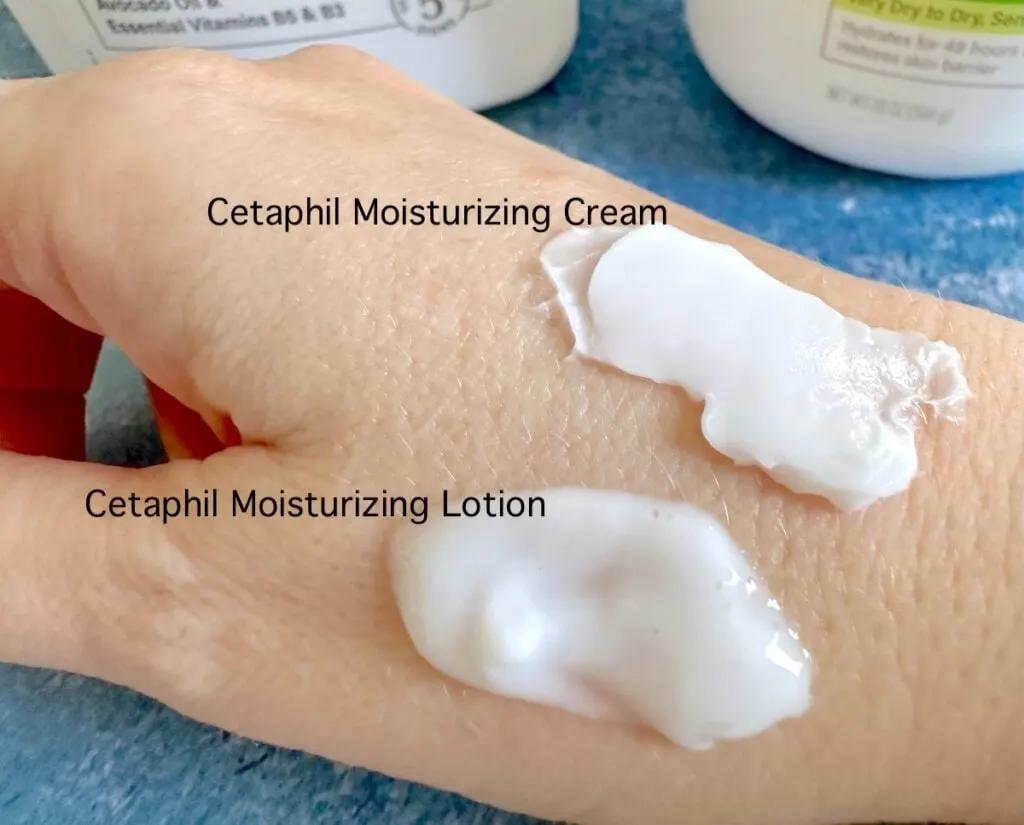
I think the easiest way to get an overall view of the similarities and differences between the cream and lotion is by reviewing this table:
| SIMILARTIES | DIFFERENCES |
|---|---|
| ✅ Both contain niacinamide, panthenol, sunflower oil, and glycerin | ✅ Cream is formulated for dry to very dry, sensitive skin; Lotion is formulated for normal to dry, sensitive skin |
| ✅ Non-comedogenic | ✅ Cream has a thicker texture |
| ✅ Fragrance-free | ✅ Cream contains petrolatum |
| ✅ Can be used on the face and body | ✅ Cream contains sweet almond oil; Lotion contains avocado oil |
| ✅ Suitable for sensitive skin |
Cetaphil Moisturizing Cream and Lotion Similarities
Both products are formulated with a similar ingredient list. They both contain niacinamide, panthenol, glycerin, and sunflower seed oil to provide intense hydration and nourishment.
Both contain dimethicone, a silicone-based emollient that forms a protective barrier on the skin to help trap moisture and protect against irritants.
Both the cream and the lotion are formulated to defend against five signs of skin sensitivity. These include:
- A weakened skin barrier
- Irritation
- Roughness
- Tightness
- Dryness
The cream and lotion are non-comedogenic, so they won’t clog pores and cause acne or breakouts. Both are suitable for sensitive skin and free from fragrances that can cause irritation.
Cetaphil Moisturizing Cream and Lotion Differences
The most obvious difference is the texture of these two Cetaphil skincare products. The cream is thicker, and more emollient, while the lotion is thinner and more lightweight.
The cream is formulated for dry to very dry, sensitive skin, while the lotion is formulated for normal to dry, sensitive skin.
Neither will make your skin feel greasy, sticky, or tacky, though. They sink in quickly and leave your skin soft and smooth.
Unlike the lotion, the cream contains the extra-rich emollient petrolatum that creates a protective barrier on the skin to lock in moisture. The cream is ideal for dry, rough, or sensitive skin that needs extra nourishment.
The cream contains sweet almond oil, while the lotion contains avocado oil. Both plant oils will nourish your skin with moisturizing fatty acids.
Let’s take a more detailed look at each Cetaphil product:
Cetaphil Moisturizing Cream
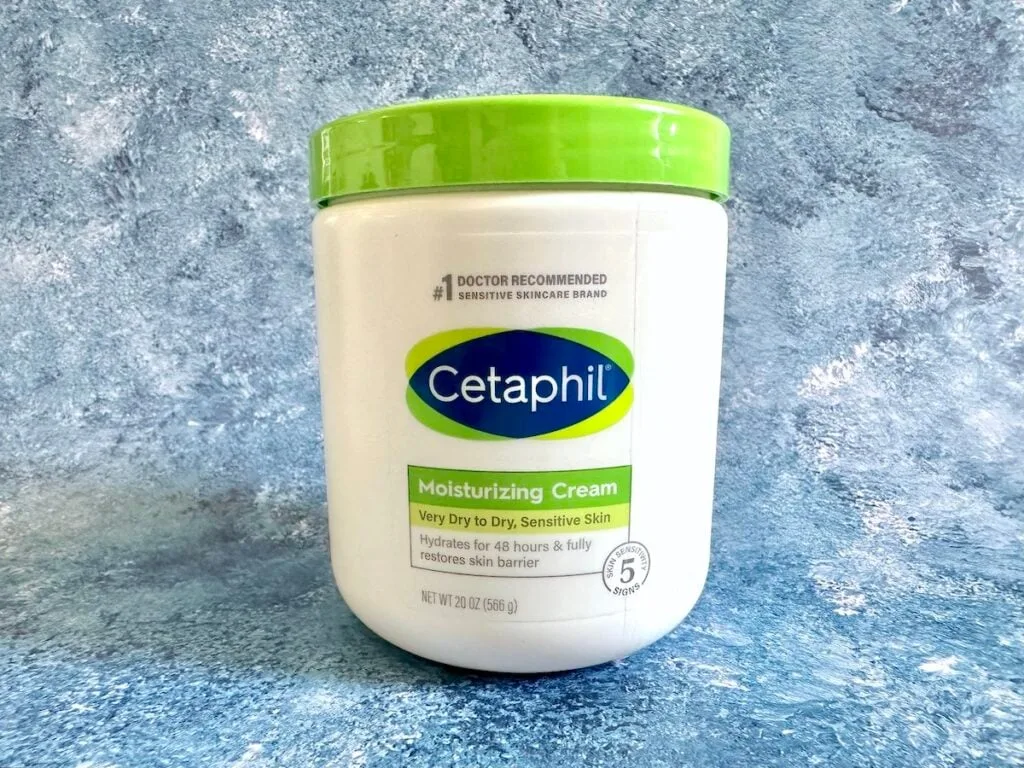
Cetaphil Moisturizing Cream is a thick and nourishing moisturizer formulated for dry to very dry, sensitive skin.
This fragrance-free cream has a super thick texture and is formulated with a blend of vitamins and emollient actives that help to restore and maintain the skin’s natural moisture balance.
This Cetaphil moisturizer is so nourishing that it ups skin hydration levels on day one and completely restores your skin barrier in just one week, which is pretty impressive.
What does your skin barrier do? Your skin barrier helps to resist external stresses and helps to keep your skin moisturized.
In other words, it keeps the moisture in and the irritants out.
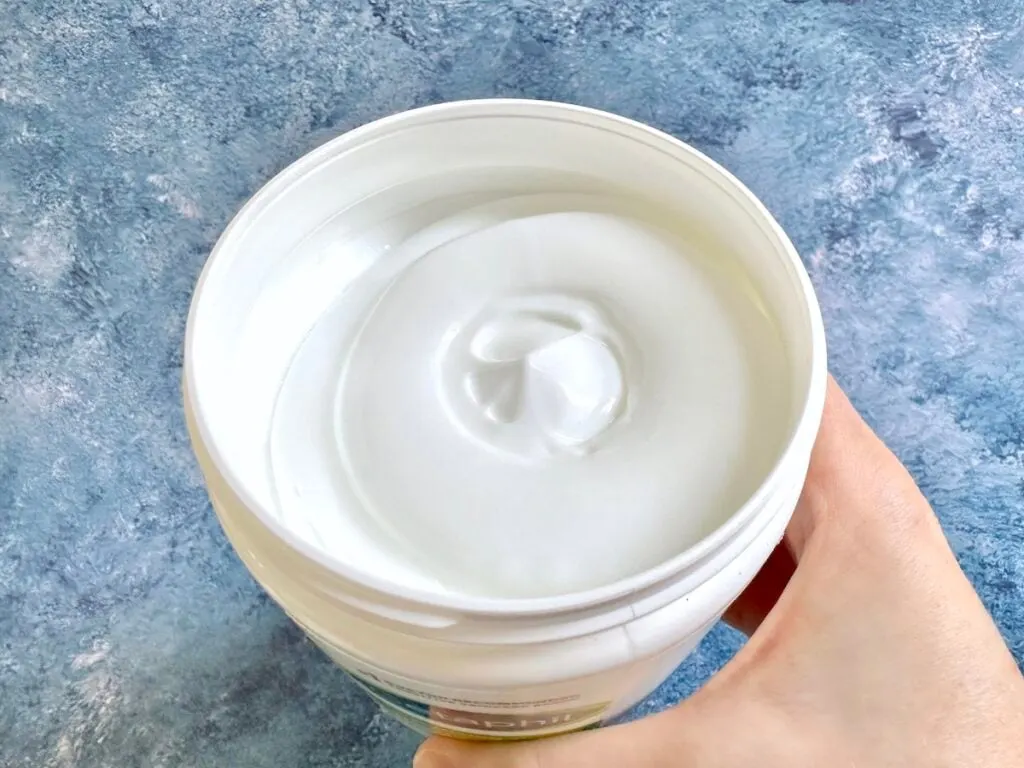
Cetaphil Moisturizing Cream Key Ingredients
Glycerin: A humectant that draws moisture from the environment into your skin to improve skin hydration. Glycerin is excellent for sensitive and dry skin, as it is non-irritating and supports a healthy skin barrier.
Petrolatum: A thick, occlusive, and protective emollient that creates a barrier on the skin. This mix of mineral oil and waxes helps prevent moisture loss while being non-comedogenic, so it won’t worsen acne or cause breakouts.
Helianthus Annuus (Sunflower) Seed Oil: A lightweight oil that helps reduce water loss and hydrate the skin. Sunflower seed oil is rich in moisturizing fatty acids and helps repair a damaged skin barrier.
Panthenol: Also known as pro-vitamin B5, this ingredient helps to soothe and moisturize the skin. It promotes wound healing, reduces inflammation, and replenishes the skin barrier.
Niacinamide: This all-star ingredient helps to reduce the appearance of wrinkles, minimize enlarged pores, even skin tone, and reduce redness. Niacinamide is a multi-tasking active that replenishes the skin’s moisture barrier and helps to keep the skin hydrated.
Prunus Amygdalus Dulcis (Sweet Almond) Oil: Rich in nourishing fatty acids, sweet almond oil helps to moisturize and condition the skin.
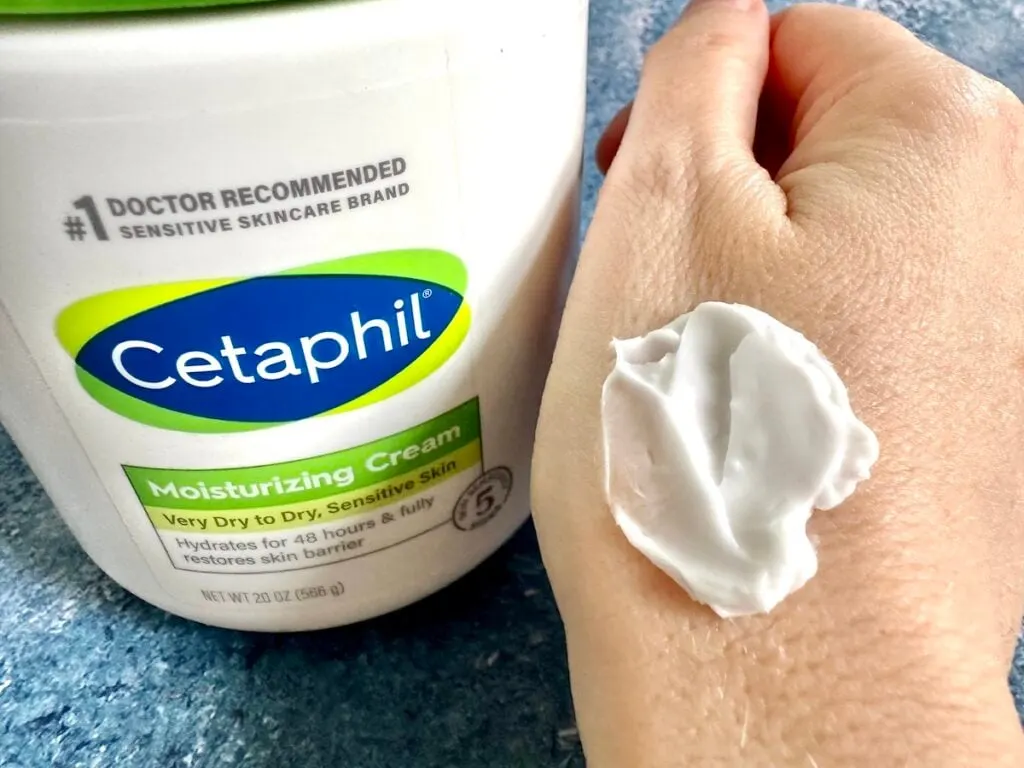
Sweet almond oil also contains vitamin E, which is an antioxidant that protects the skin from environmental stressors. This emollient plant oil helps soften flaky and dehydrated skin.
Cetaphil cream is easily absorbed into the skin and leaves a silky-smooth finish that isn’t greasy or sticky. Skin is left feeling soft, smooth, and plump.
The cream is hypoallergenic, paraben-free, and non-comedogenic, so it won’t clog your pores and cause acne or breakouts.
The cream can be used on both your face and body, although it might be too thick if you have a combination or oily skin type.
Cetaphil cream is probably the better choice if you have a very sensitive or dry skin type, instead of the lightweight Cetaphil Moisturizing Lotion, which we’ll discuss next.
Cetaphil Moisturizing Lotion
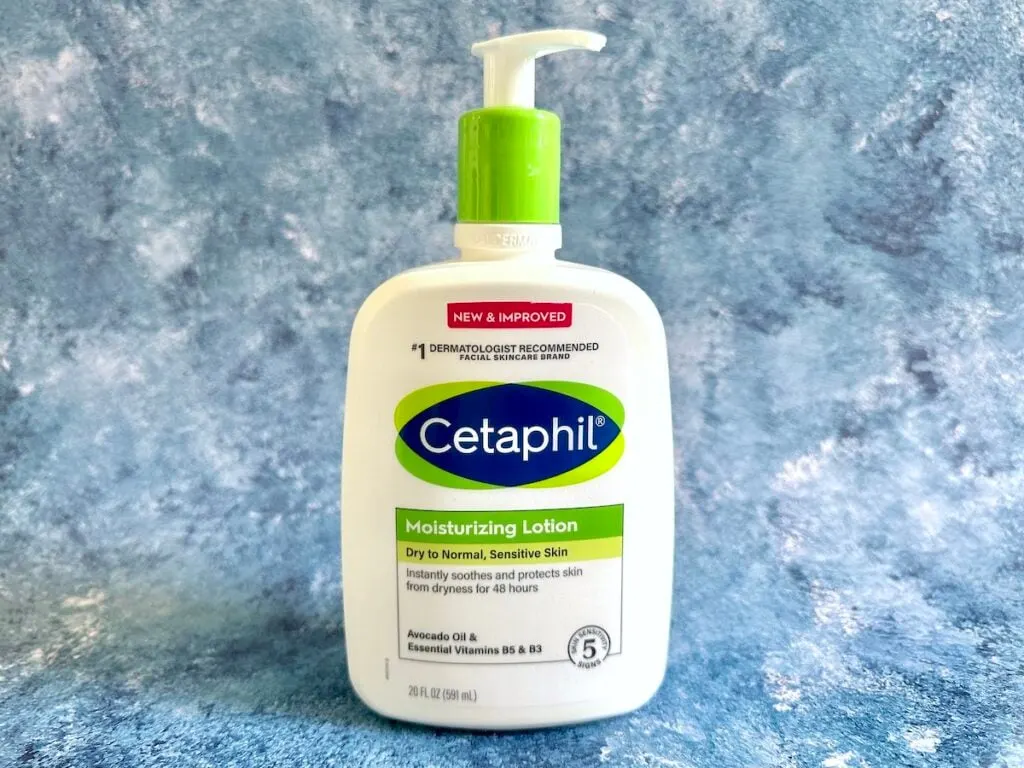
Cetaphil Moisturizing Lotion is a lightweight and fast-absorbing lotion specially formulated for normal to dry, sensitive skin.
Like the cream, the body lotion is fragrance-free and, like the cream, restores your skin’s natural moisture barrier in just one week of use.
This Cetaphil product is formulated with avocado oil, vitamins, and other replenishing actives that hydrate and soothe your skin.
This body moisturizer can also be used as a facial moisturizer. It is paraben-free, hypoallergenic, and non-comedogenic, so you don’t have to worry about it causing acne or breakouts.
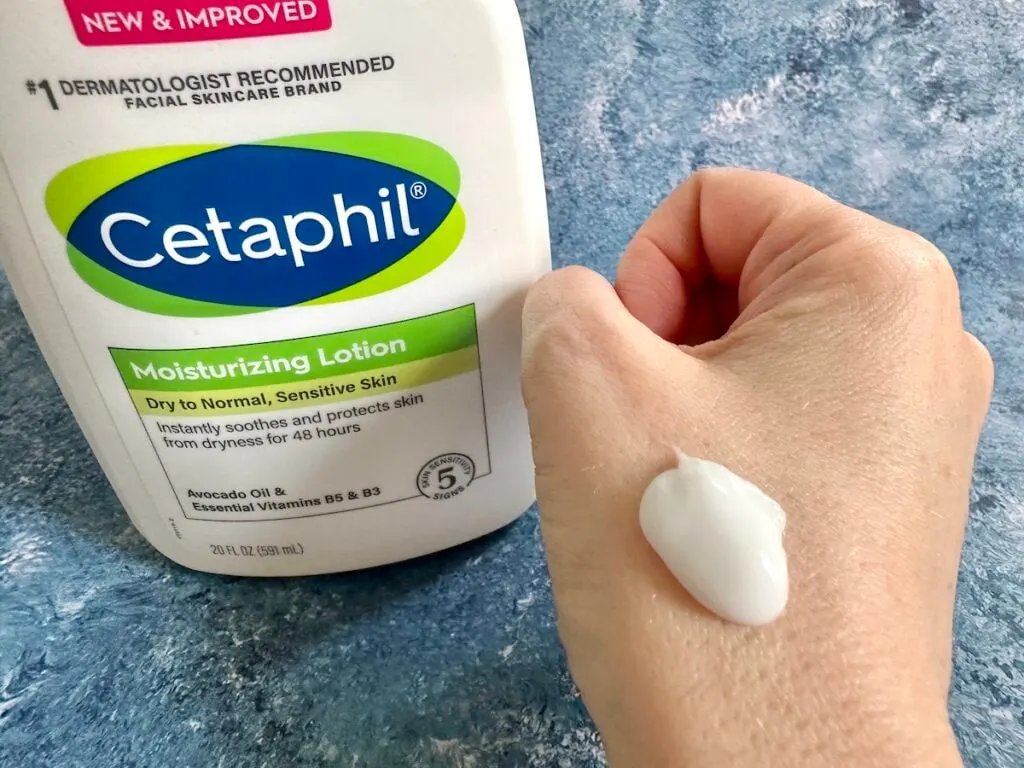
This Cetaphil lotion is easy to apply and doesn’t leave behind any greasy residue like some moisturizers. This makes it an excellent choice for those who don’t like the feeling of heavy creams on their skin but still want to keep it hydrated.
This lotion does not contain any harsh or irritating ingredients, making it ideal for sensitive skin types.
Cetaphil Moisturizing Lotion Key Ingredients
Glycerin: Because glycerin is so common in skincare products, it often gets overlooked, but it is an incredibly effective and gentle moisturizer. It helps restore the skin’s natural moisture balance, making it a great choice for dry, itchy skin.
Panthenol: Panthenol is a pro-vitamin of B5, which means that it can be converted into vitamin B5. It improves skin barrier function, has soothing and reparative benefits, and is beneficial for various skin concerns, including dryness, irritated skin, and damage.
Niacinamide: Also known as vitamin B3, niacinamide is a water-soluble vitamin that replenishes the skin, helps improve skin texture and tone, and balances oil production in the skin, making it a popular ingredient for those with oily skin.
Niacinamide also reduces inflammation, boosts collagen production for a reduction in the look of wrinkles and fine lines, and can even help with acne.
Persea Gratissima (Avocado) Oil: A rich source of essential fatty acids and vitamins and minerals, avocado oil easily penetrates the skin and offers antioxidant benefits thanks to its vitamin E content. Its high oleic acid content helps to lock in moisture.
Helianthus Annuus (Sunflower) Seed Oil: Sunflower oil is a non-greasy, lightweight plant oil that helps restore a compromised skin barrier. It’s non-comedogenic, so it won’t clog pores, making it suitable for oily skin.
Sunflower oil is also high in linoleic acid, an essential fatty acid with anti-acne benefits.
Related Post: CeraVe Moisturizing Cream vs Lotion
Cream vs Lotion: Size
Cetaphil Moisturizing Lotion comes in 2 oz, 4 oz, 8 oz, 16 oz, and 20 oz sizes, with the large sizes having a convenient pump bottle.
Cetaphil Moisturizing Cream comes in 1 oz, 3 oz, 8.8 oz, 16 oz, and 20 oz sizes, and comes in a tube or a tub due to its thicker consistency.
Cream vs Lotion: Price
The cream and lotion are priced very similarly, with the cream being slightly more expensive. Both are very affordable and available at drugstore prices.
The prices will vary depending on where your purchase these Cetaphil products and what size you buy.
Should You Use Cetaphil Moisturizing Cream Or Lotion For Acne?
It is generally recommended to use a lightweight, oil-free moisturizer for acne-prone skin. The good news is that both Cetaphil Moisturizing Cream and Cetaphil Moisturizing Lotion are non-comedogenic, which means that they won’t clog pores.
However, both the cream and the lotion are not oil-free. But because Cetaphil Moisturizing Lotion is lighter and more easily absorbed into the skin, it is the better choice for acne-prone skin.
It is important to remember that every person’s skin is unique, and what works for me may not work for you.
If you are unsure which product is best for your skin, it is always a good idea to consult a dermatologist or skincare professional. They can help recommend the best skincare products for your skin type and concerns.
Keep in mind that both products might work for you at different times of the year.
You might find that the moisturizing cream is more beneficial in colder, drier months, while the lotion might work well during warmer climates or times of increased humidity.
Alternatives to Cetaphil
If Cetaphil products aren’t right for your skin and you are looking for an affordable drugstore alternative, consider Cerave moisturizers.
CeraVe products offer skincare benefits similar to Cetaphil but contain different ingredients, such as three essential ceramides and hyaluronic acid.
Instead of Cetaphil Moisturizing Cream -> Try CeraVe Moisturizing Cream
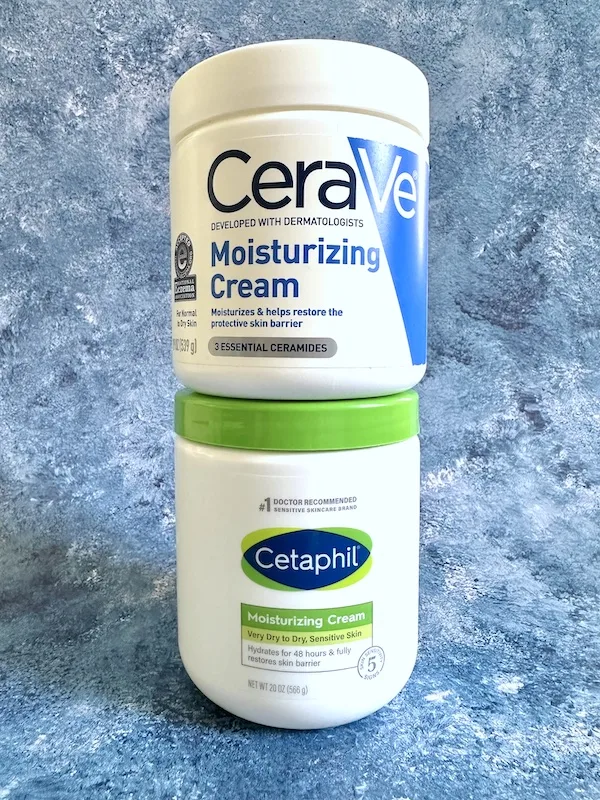
CeraVe Moisturizing Cream is formulated with three ceramides, Ceramide NP, Ceramide AP, and Ceramide EOP, which are lipids that strengthen your skin’s natural moisture barrier.
This best-selling face and body cream also contains cholesterol, a natural moisturizing factor that helps to protect and soften the skin.
Like Cetaphil, it is fragrance-free, non-comedogenic, and contains dimethicone, petrolatum, and glycerin to moisturize and protect your skin.
A noticeable difference between CeraVe and Cetaphil creams is that CeraVe Moisturizing Cream isn’t as thick as Cetaphil. Cetaphil is much thicker and richer in texture than CeraVe.
Instead of Cetaphil Moisturizing Lotion -> Try CeraVe Daily Moisturizing Lotion
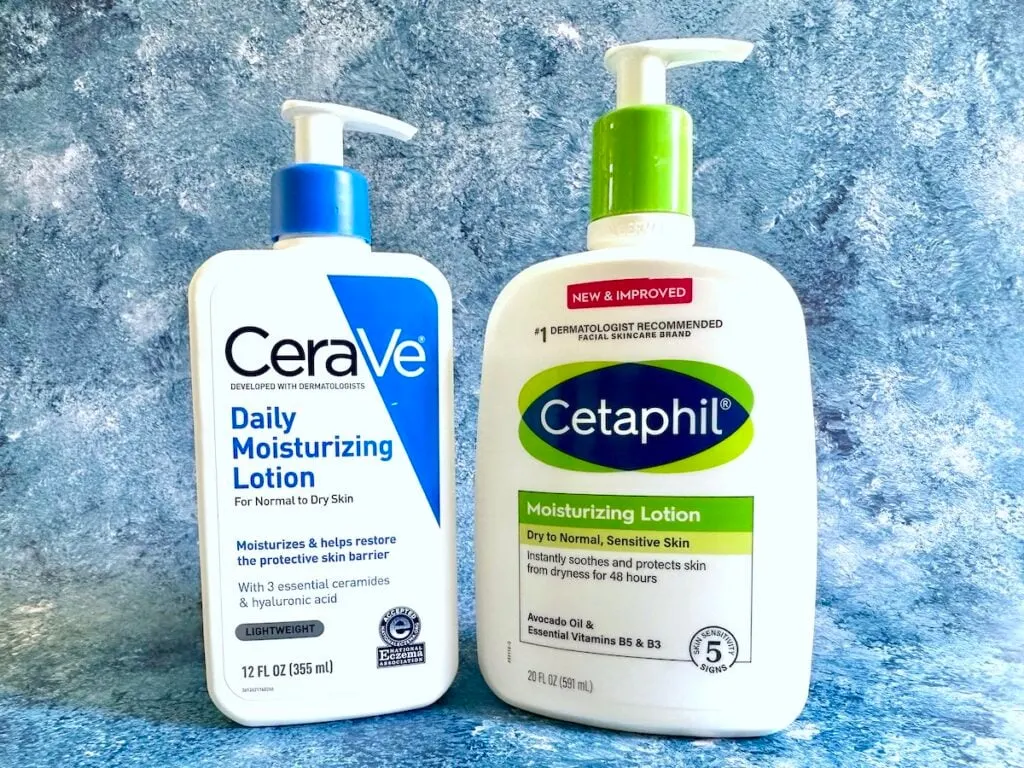
CeraVe Daily Moisturizing Lotion is a lightweight daily lotion that is oil-free, making it a great choice for those with oily, acne-prone, and combination skin.
The lotion contains three essential ceramides, Ceramide NP, Ceramide AP, and Ceramide EOP, that help to fortify your skin’s natural barrier, leaving it feeling soft and hydrated.
It also contains hyaluronic acid to help your skin retain its natural moisture and lock in hydration. Cholesterol and fatty acids help to nourish and protect your skin.
Like Cetaphil Moisturizing Lotion, CeraVe Daily Moisturizing Lotion contains glycerin and dimethicone to help lock in moisture, is free of fragrances, and is non-comedogenic.
For an in-depth comparison between the two brands, check out my CeraVe vs Cetaphil post.
About Cetaphil
Cetaphil is a brand of skincare products that was first developed in 1947 by a pharmacist in Texas.
The brand was initially created to provide gentle, non-irritating skincare products for individuals with sensitive skin.
Cetaphil’s first product Cetaphil Cleansing Lotion is still sold today under the name Cetaphil Gentle Skin Cleanser.
The name Cetaphil can be broken down into “cet” which comes from cetearyl alcohol, a hydrating active, and “phil,” meaning loving. Thus, the name Cetaphil means “the love of moisturizing and soothing skin.”
In the decades since its founding, Cetaphil has become a well-known and trusted brand, with a range of skincare products formulated for different skin types and concerns, including baby and sun care products.
Cetaphil products are now sold in over 70 countries worldwide and are widely used by dermatologists and other skincare professionals.
Today the brand continues its commitment to creating high-quality, gentle skincare products suitable for sensitive skin.
Thanks for reading!

